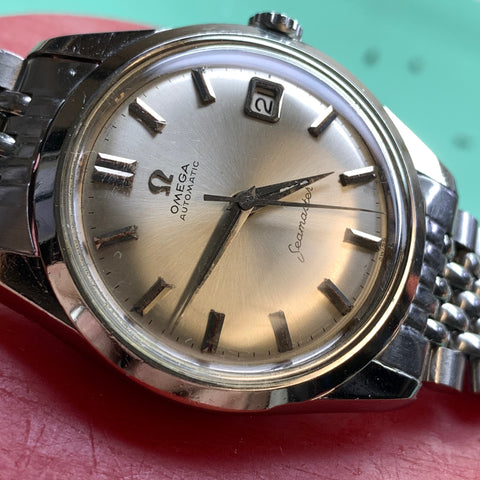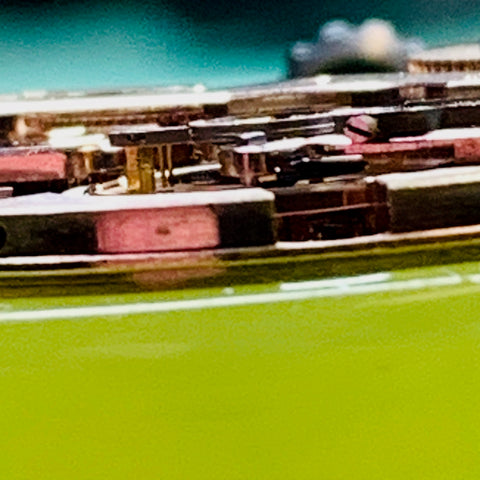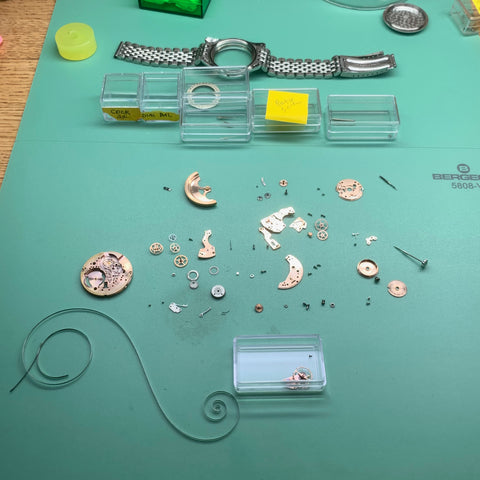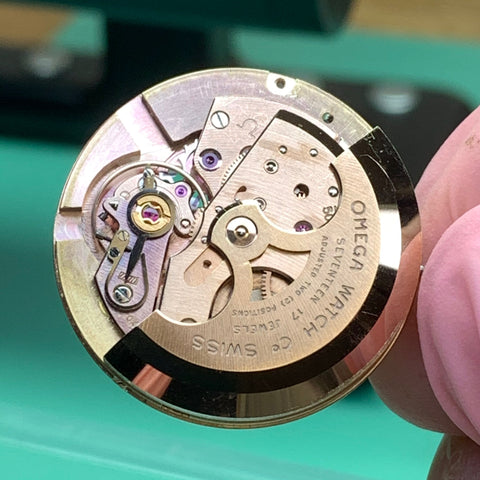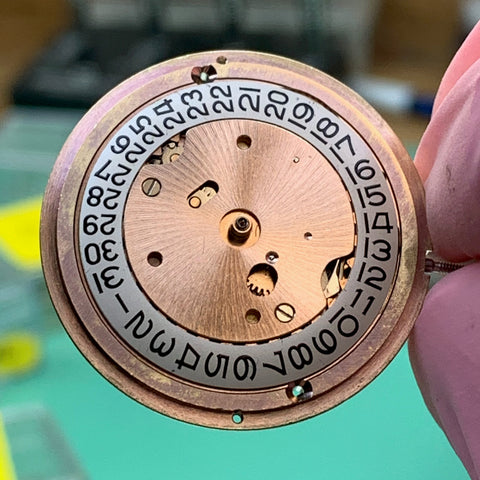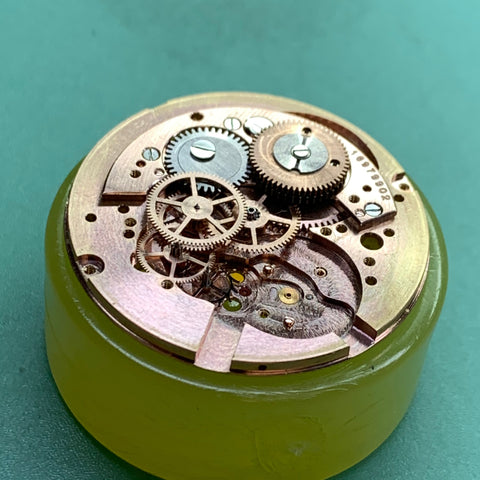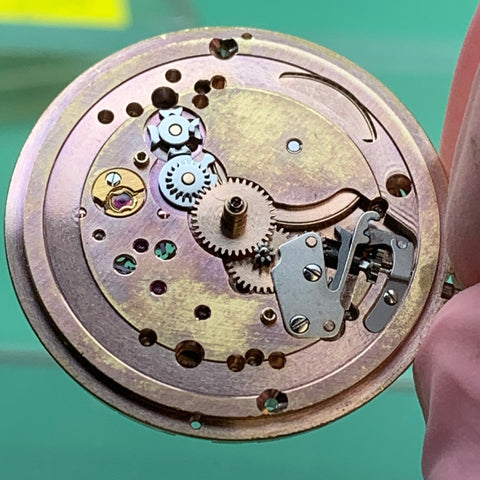I recently serviced this beautiful 1950's Omega Seamaster calibre 502 family watch for a ClockSavant customer. Join over 5000+ ClockSavant fans on Instagram today and see the video associated with this post. It was given to his father as a graduation gift and worn by him for nearly 45 years. About 20 years ago it was handed-down and required servicing as it wasn't running properly. It was taken to watchmaker #1 who "serviced" it. The watch still didn't run well and over a period of 20 years was taken to two more watchmakers who "serviced" the watch and each time it came-back running poorly. Recently I was asked to make it right. First, the setting works had been bent and crown/stem could not be removed thereby preventing movement servicing. This bending can happen without any fault of the watch owner. Sometimes these parts are bent during improper installation and not corrected. The owner then, maybe a year or so later or sooner, pulls a little harder on the crown and the bend's presence becomes known. After several hours of different techniques and partial disassembly from the back of the watch, I was successful at loosening the crown from its stem and wedging the watch movement from the case. The stem was replaced and setting parts corrected. Next, the hairspring was bent and not level. This was resolved after a good deal of work. During assembly and testing, the watch was unstable in some positions and ran well in others. I concluded the balance cock was swapped by a watchmaker in the past, likely for the wrong reasons, and not adjusted. It was at an angle, not parallel, and too low in one spot by fractions of a millimeter. You need to measure quantitatively and "own the outcome" to get these watches "right." Understanding the math and science of horology is a requirement. Parts swapping is not watchmaking. You need to understand how to bring things back by repair, not simply swap parts. Running beautifully once again, this watch is back in the family for current and future generations.
